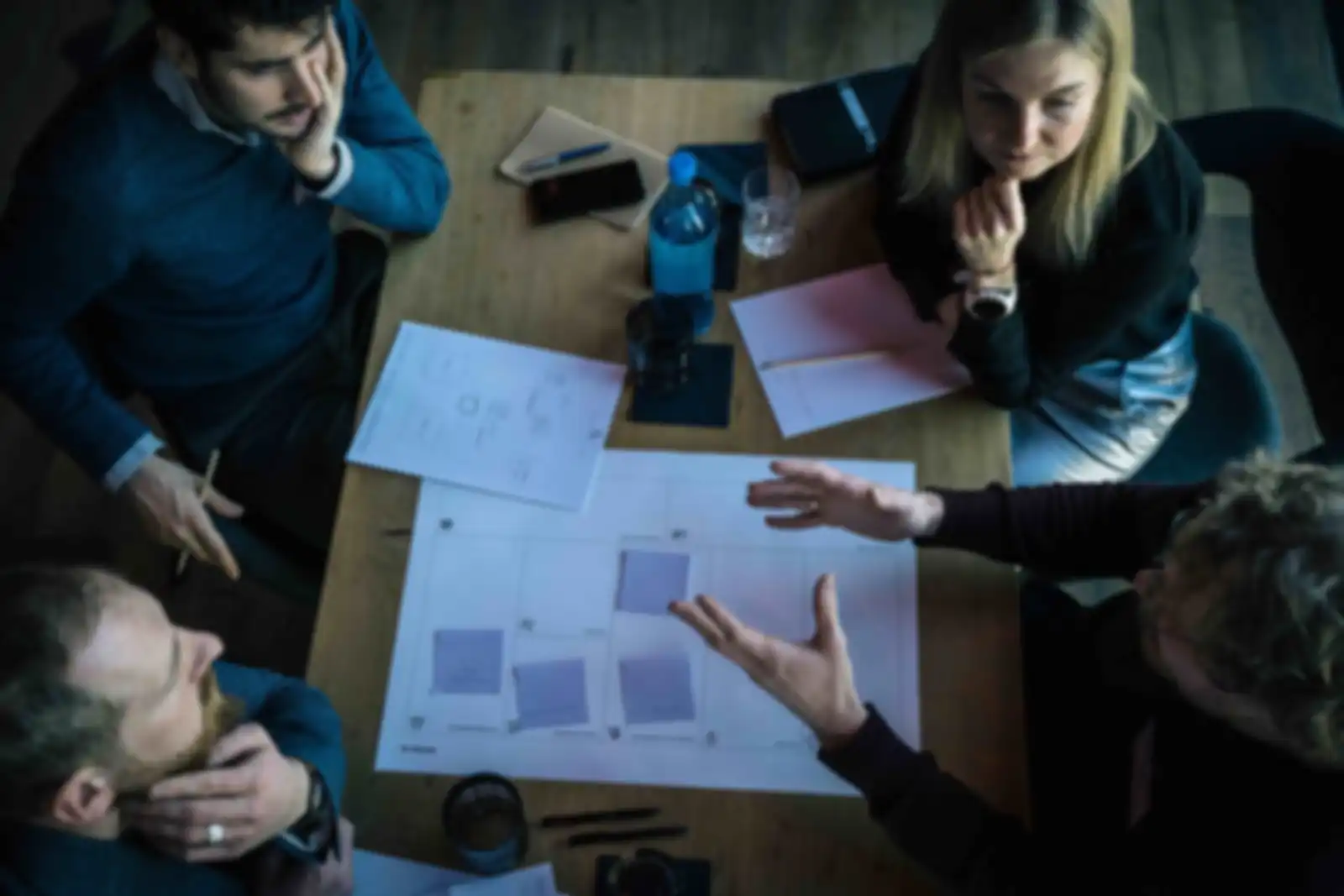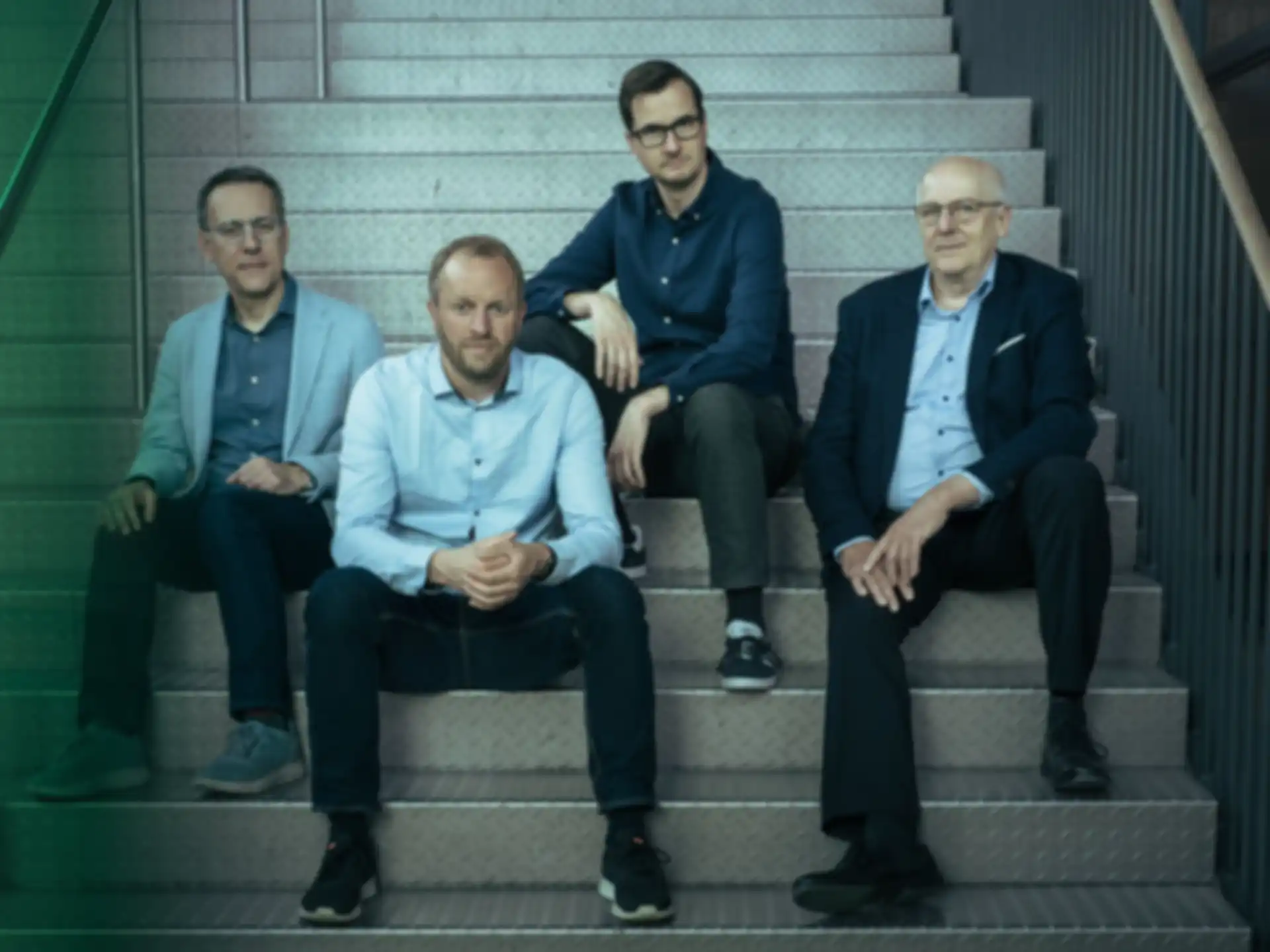6/23/2025
NATIONAL IP STRATEGY PRINCIPLES
SPRIND and other key stakeholders jointly make recommendations for the transfer of intellectual property rights to research-based spin-offs as anchored in the coalition agreement
This policy paper is a joint publication of the Federal Agency for Breakthrough Innovation (SPRIND), the Bundesverband Deutsche Startups e.V. (Federal Association of German Start-ups, also known as Startup-Verband), the Stifterverband für die Deutsche Wissenschaft (Donors’ Association for German Science), the High-Tech Gründerfonds (public-private venture capital investment firm, also known as HTGF) and TransferAllianz (TA).
The Federal Agency for Breakthrough Innovation (SPRIND), the Bundesverband Deutsche Startups e.V. (Federal Association of German Start-ups, also known as Startup-Verband), the Stifterverband für die Deutsche Wissenschaft (Donors’ Association for German Science), the High-Tech Gründerfonds (public-private venture capital investment firm, also known as HTGF) and TransferAllianz (TA) welcome the fact that the new federal government has explicitly anchored the transfer of intellectual property rights (IPRs) to research-based spin-offs in the coalition agreement.
In view of the low number of spin-offs from the field of science compared to other countries and declining patent applications in Germany, there is a pressing need for a fast tracked and founder friendly IP-transfer. Improved utilization of the existing potential of research and science for spin-offs should be promoted by the new Federal Ministry of Research, Technology and Space (BMFTR) as a matter of priority. Overall, the aim is to remove existing barriers, to make negotiation processes at universities more transparent, and to create new incentive systems. The professionalization as well as the simplification and acceleration of IP transfers are of significant importance.
The planned national IP strategy serves as a framework for standardizing IP transfer conditions nationwide and making them founder-friendly. For such an IP strategy to be successful, it is necessary that the relevant ministries responsible for the universities get involved at an early stage, in addition to consulting university representatives, representatives of the transfer offices, founders and other relevant stakeholders as well. The BMFTR can and should have a direct impact on non-university research institutions.
The development of the strategy ought to begin in the first 100 days of the new federal government.
For the national IP strategy as announced in the coalition agreement, we recommend the following principles:

Even today, spin-offs represent one of the most important pathways for intellectual property derived from scientific research to create socioeconomic impact. Utilizing intellectual property rights by spin-offs from scientific institutions should be firmly anchored at universities as a clear performance indicator, and financial resources should be made available by the funding bodies to this effect. In addition to potential financial returns from the utilization of intellectual property, scientific institutions can benefit directly from the interaction with the start-up ecosystem through potential additional research projects, career prospects for young scientists and a positive public perception of the scientific institution as a driver for growth. At the same time, it must be ensured that the expiry of the WIPANO program to promote patent applications in 2023 does not lead to a decline in transfer activities and, above all, patent applications. The BMFTR can provide new incentives for this within the system by combining transfer and research funding more consistently than before. Accordingly, the H-index as the sole indicator of research excellence should be equally complemented by an I-indicator (I for Impact), enabled by the expansion of sustainable transfer and start-up support mechanisms.
With the COMMISSION REGULATION (EU) 2023/1315 dated June 23, 2023, the EU state aid framework was fundamentally revised and adapted to the current economic conditions in Europe. The amendments to Article 22 explicitly address the importance of spin-offs and include statements on how to determine a fair market value. In addition, the maximum permitted amount for supporting the formation of spin-offs from scientific institutions will be significantly increased to up to EUR 1 million. This adjustment of the state aid framework underlines the importance that the EU Commission attaches to spin-offs for the transfer of research results and for creating economic impact overall. The national IP strategy should ensure that, for example, discounted access to infrastructures and core facilities (e.g., internal prices) is guaranteed during the early growth phase, a reduced overhead rate in the case of contract research, and that pending payments can be deferred in the case of IP transfers to spin-offs. This contributes decisively to revitalizing the domestic start-up ecosystem, to make broad use of unused university patents financed with taxpayers’ money, and to ensure that Germany does not lose ground in the European competition for the most innovative spin-offs. The European Union’s recently published Start-up and Scale-up Strategy can provide further guidance in this regard.
In the early spin-off phase, founders work flat out and with limited resources to build up the company and fight for the favour of investors. Every additional euro that is available for these crucial processes extends the period until the next round of financing and thus directly increases the chances of success of the spin-off. Therefore, any loss of liquidity from license agreements should be minimized or deferred in the critical initial phase. This gives the spin-offs more financial leeway, and the scientific institutions reduce the insolvency risk of the spin-offs through such founder-friendly contracts. The granting of a direct, indirect or virtual participation in the spin-off, including the entrepreneurial opportunities and risks, allows so-called back-loaded
deal models. This largely avoids early outflows of capital at the expense of founders and investors, for example, when reaching certain financial milestones or an exit.
The typical contractual components of an IP contract are similar. By providing typical regulatory content in standard clauses, it is possible to simplify and expedite the overall process, especially in the case of first-time founders lacking previous professional experience. This enables fair and transparent contract drafting, as information deficits can be reduced more quickly and valuable negotiation time can be invested in the contract components that do need to be tailored to the individual circumstances of the spin-off and the interests of the scientific institution. Approaching contract design with this mindset creates transparency and preempts from the outset the integration of contractual components that would have to be renegotiated in later financing rounds, which could adversely affect company growth or even destroy company value. Another important aspect is transparency in the design of payment outflows. If different remuneration components (participation, license, milestone payments, etc.) are agreed, they should be related to each other credibly and transparently. A mutual creditability of the payment components is absolutely necessary. However, it should be borne in mind that the combination of several payment streams increases the complexity of the contract and the associated review, evaluation and negotiation effort overall. An orientation to international models (e.g., AUTM or USIT Guide) can be helpful, but do not necessarily constitute a blue print.
The speed of implementation is particularly important during the spin-off phase. A contract conclusion within 12 weeks is attainable and realistic. To achieve this, both parties must be focused on the IP negotiation . Under the basic premise that both parties conduct the negotiation with increasing the revenue potential for both sides and disclosing all value-determining factors without restriction, this is an achievable time frame. Sufficient professional personnel resources must be available on both sides. This also requires a permanent build-up of know-how on IP transfer within the scientific institutions, which requires additional financial resources. A short negotiation time also minimizes the time to market launch and thus the capital efficiency of the spin-off and the possible first returns. In the event of unresovable disputes in the negotiations, a higher-level mediation and conciliation body must be set up which is accepted by both sides and which facilitates a quick agreement.
The IP transfer from scientific institutions to spin-offs must be carried out in accordance with applicable laws and under customary/fair market conditions. This requires that both negotiating partners share their evaluation parameters and review them in a structured process. Principles of patent valuation are described in DIN 77100, arbitral awards of the DPMA or license databases provide a variety of price indications. Further expertise can be brought in from the scientific institution, the expertise of the patent attorneys involved or on the basis of market information from the founding team or from investors who are not involved in the spin-off. The more datapoints available, the more precisely the value of the patent valuation can be determined or approximated. Both negotiating partners are required to disclose all available information for valuation. Otherwise, price transparency and balanced negotiation cannot be achieved.
It is also crucial for practical application that the knowledge base within the auditing bodies is improved when it comes to reviewing spin-off activities by research institutions. This is what the national IP strategy should definitely work towards. In this respect the signatories all expressly support the ongoing efforts to set up deal databases for spin-offs.
So far, IP transfer has not been very well acknowledged or uniformly integrated in corresponding funding guidelines. The steering group of the IP-Transfer 3.0 – Neue Wege im IP Transfer
(New approaches to IP transfer) pilot project has developed corresponding text modules for this together with the BMFTR (formerly BMBF, Federal Ministry for Education and Research). Up until this point, however, these are only an optional component of future funding guidelines in programmes with explicit transfer relevance. We advocate mandatory inclusion with simultaneous dynamic development of these text modules with all stakeholders.
All information on IP-Transfer 3.0, the pilot program of SPRIND, the Stifterverband and the Fraunhofer Institute for Systems and Innovation Research, can be found on the project page.
Read the interview with Barbara Diehl, head of the IP-Transfer 3.0 initiative at SPRIND, here.



